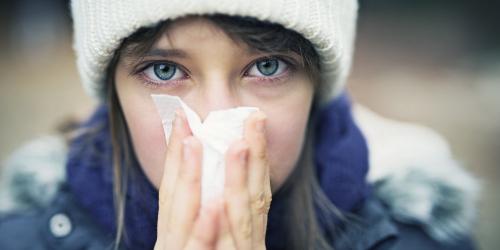Cholesterol: Foods to adopt and banish
Cholesterol: The treatments to follow against the disease
Cholesterol: What is it?
Cholesterol is a lipid essential for the proper functioning of our body. Present in many tissues, it contributes to the stability of cell membranes , the synthesis of vitamin D and the synthesis of various hormones including sex hormones (estrogen, progesterone ...). However, in excess in the body, it is dangerous .
Where does cholestérol come from?
Cholesterol has two sources , it is 70% produced by the body (liver and intestines) and the remaining 30% comes from our diet .
What are the differences between good and bad cholestérol?
Good cholesterol , also called HDL , recovers cholesterol deposited in the blood vessels and leads to the liver so that it is eliminated via the bile.
As for the bad cholesterol , called LDL , it carries the cholesterol from the liver to the body. It tends to settle on the arteries and to obstruct them. Thus, LDL increases the risk of cardiovascular disease.
Cholesterol: Foods to adopt and banish
Bad cholesterol is found in animal products that are high in saturated fatty acids : eggs, offal (liver and heart), cold cuts and meat.
Here are some high cholesterol foods (mg / 100g):
The brains : 2600
The egg yolk : 1400
Cooked kidney : 520
Mayonnaise : 165
Butter : 250
Quiche Lorraine : 180
Foie gras : 380
Caviar : 440
Madeleine : 203
Dutch sauce : 200
Salmon eggs : 250 to 400
Country pâté and liver pâté : 250 to 400
Lobster, shrimp, crab : 120 to 250
Cholesterol: The treatments to follow against the disease
To treat bad cholesterol , two solutions are available to you: dietetics and taking medication .
To lower cholesterol, the 1st essential step is to make a diet. Fats of animal origin , saturated fats and foods high in cholesterol are therefore to be avoided. Prefer polyunsaturated vegetable fats and monounsaturated (sunflower, corn, soybean, rapeseed ...) and eat fish, veal, poultry, horse instead of fatty meats (eg sausages). The consumption of antioxidants in raw vegetables, citrus fruits, fruits, vegetables, fish, meats, poultry, vegetable oils and whole grains can lower cholesterol levels and fight heart disease. vascular
For some, the diet is insufficient and must be accompanied by medication: lipid-lowering .
These are drugs that can lower the level of lipids in the blood (hyperlipidemia). They decrease the natural production of cholesterol by the liver and increase the natural elimination of cholesterol from the bloodstream.


